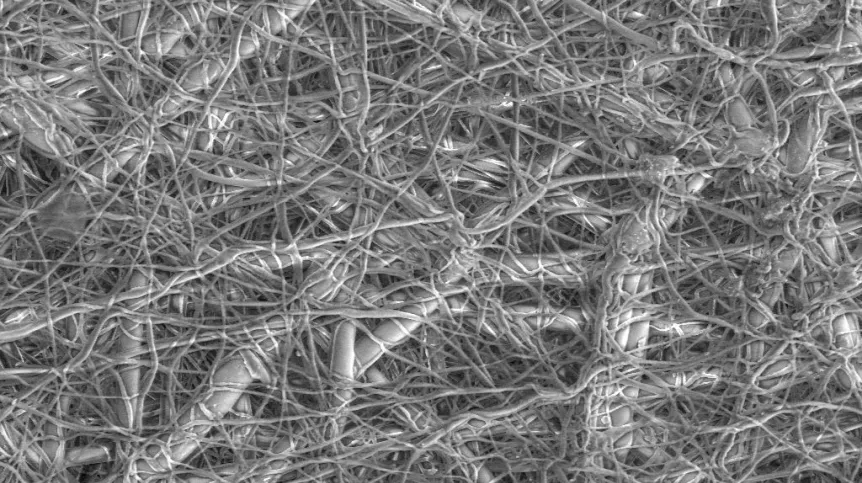
Scientists from the Polish Academy of Sciences have developed a non-woven nanotextile that allows for a controlled drug release. Appropriate production and 'programming' of this system allows to dose the drug substance for a specific period of time and ensures that it reaches a specific place.
The invention was developed at the Centre of Polymer and Carbon Materials of the Polish Academy of Sciences in Zabrze and the Medical University of Silesia.
Seen by the naked eye, non-woven textile resembles a sheet of paper or canvas with a thickness of less than 1 mm. However, it consists of such small parts that viewing its structure is possible only under an electron microscope. The structure of the non-woven fabric resembles the natural cellular scaffolding found in a living organism. Thanks to this, it can be colonized by cells and thus accelerate the regeneration of diseased tissues, and by releasing medicinal substances - it can also have a therapeutic function.
Jakub Włodarczyk from the Centre of Polymer and Carbon Materials of the Polish Academy of Sciences in Zabrze explains the method of manufacturing this nonwoven fabric. 'Using the method of electrospinning biodegradable polymer solutions, we produce micro and nanofibres, from which we then form a non-woven fabric. It consists in the production of thin fibres using electric field forces, which - intertwined in a random way - form a nanomaterial', he says.
The invention concerns the method for controlling the release rate of drugs. 'To achieve the intended result, microfibres containing the drug are intertwined with nanofibres of the polymer that controls its release rate, differing from them in water wettability. Drugs can be incorporated into hydrophobic (water-repelling - ed.) polymers, which are more resistant to the effect of biological fluids in the body. This allows them to dissolve and be delivered to the body for a certain period of time - a long time, even a year, or in the case of hydrophilic and soluble polymers - a short time, for example a few hours', he says.
Importantly, it is possible to produce a mixture of fibres in such a way that the medicinal substances only reach a specific spot. In the future, this solution may be used, for example, in the treatment of cancer. 'Tumour excision does not always allow to remove all diseased cells. Our nanofibre could be introduced into such a place and release medicinal substances directly to these diseased cells, ensuring that the drugs will not harm healthy cells. This will allow to minimize the side effects of chemotherapy, the effect of which on the whole body is extremely toxic due to its system-wide, e.g. intravenous administration', emphasises Włodarczyk.
After introducing an appropriate medicinal substance and a required modification, the material developed by scientists can be used on the skin (e.g. in the treatment of hard-to-heal wounds) or in other applications inside the body, for example as a mesh in the treatment of hernia. The implantation of the nanotextile is possible thanks to the use of biodegradable polymers, which dissolve and are absorbed by the body together with the released drug.
'There are no restrictions with regard to the type of used medicinal substances, because there are many ways to introduce a given drug into the fibres, depending on the needs', explains Włodarczyk.
In the scientist's opinion, nanofibres with drugs will not be used on a large scale in the near future. 'It's more about the possibility of personalized therapies, tailored to the needs of specific patients', he points out.
According to Włodarczyk, the process of implementing systems for the controlled release of medicinal substances in the form of a non-woven nanotextile is currently at the stage of pre-clinical and clinical trials in various research centres around the world. 'The technology itself is not complicated, the equipment is common, but the approval of new forms of treatment requires time-consuming, thorough research. I think that our solution may be implemented in a few years', says Jakub Włodarczyk. (PAP)
PAP - Science in Poland, Agnieszka Kliks-Pudlik
akp/ zan/ kap/
tr. RL













